Abstract
The indirect haemagglutination (IHA) test using sensitized turkey erythrocytes and the indirect immunofluorescence assay (IgM-IFA) was confirmed to be sensitive in the detection of a recent or current Pseudomonas pseudomallei infection in 19 culture-confirmed Singapore melioidosis patients. All were found to have antibody titres from 4 to 32768 in the IHA test and 10 to 320 in the IgM-IFA test. When these tests were employed on sera from 16 immigrant Thai construction workers who died of sudden unexplained death syndrome (SUDS) and 73 healthy Thai fellow workers, 93.8% and 68.8% of SUDS cases had IHA titre of greater than or equal to 4 and IgM-IFA titre of greater than or equal to 10 respectively, in contrast to 39.7% and 12.3% found among healthy Thai workers. These data indicate that at the time of death, most of the SUDS patients had an active infection with P. pseudomallei, possibly resulting from reactivation of a latent infection. The aetiological role of P. pseudomallei as the major cause of SUDS is discussed.
Full text
PDF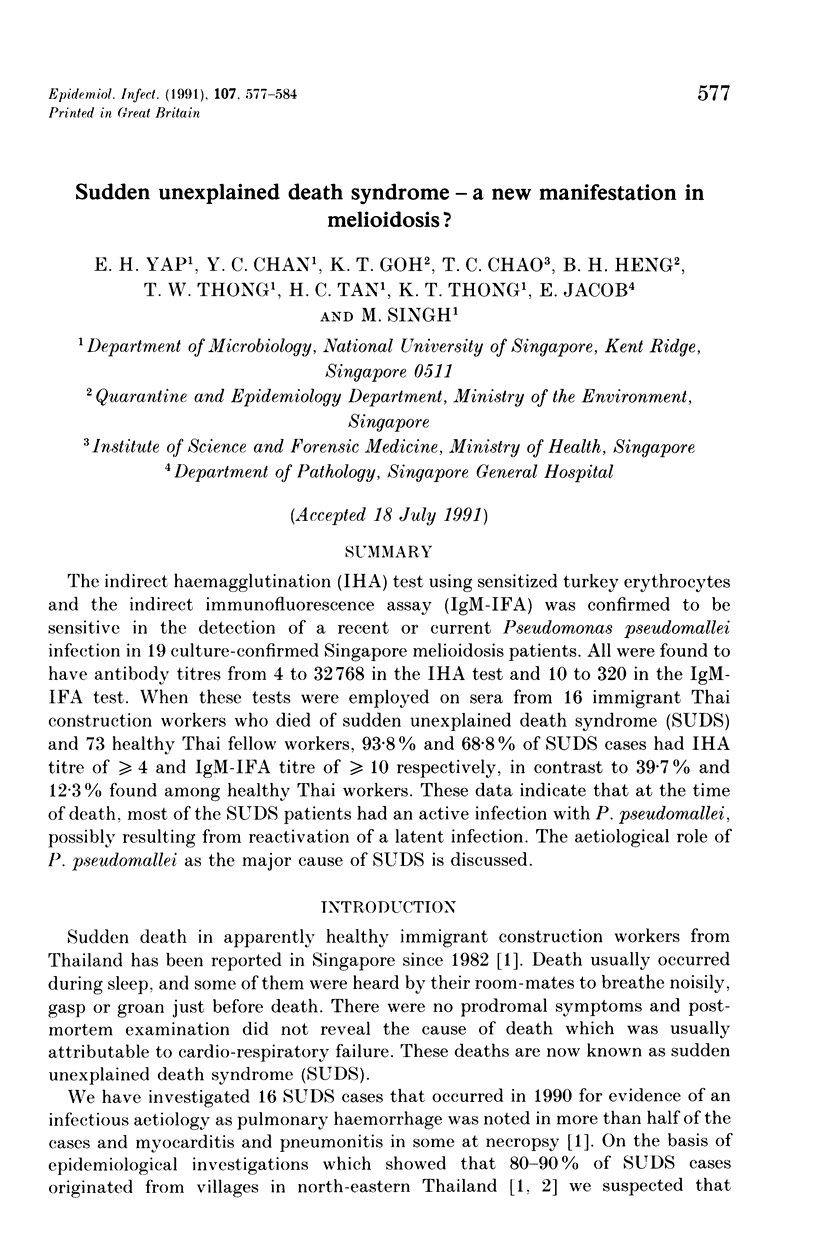
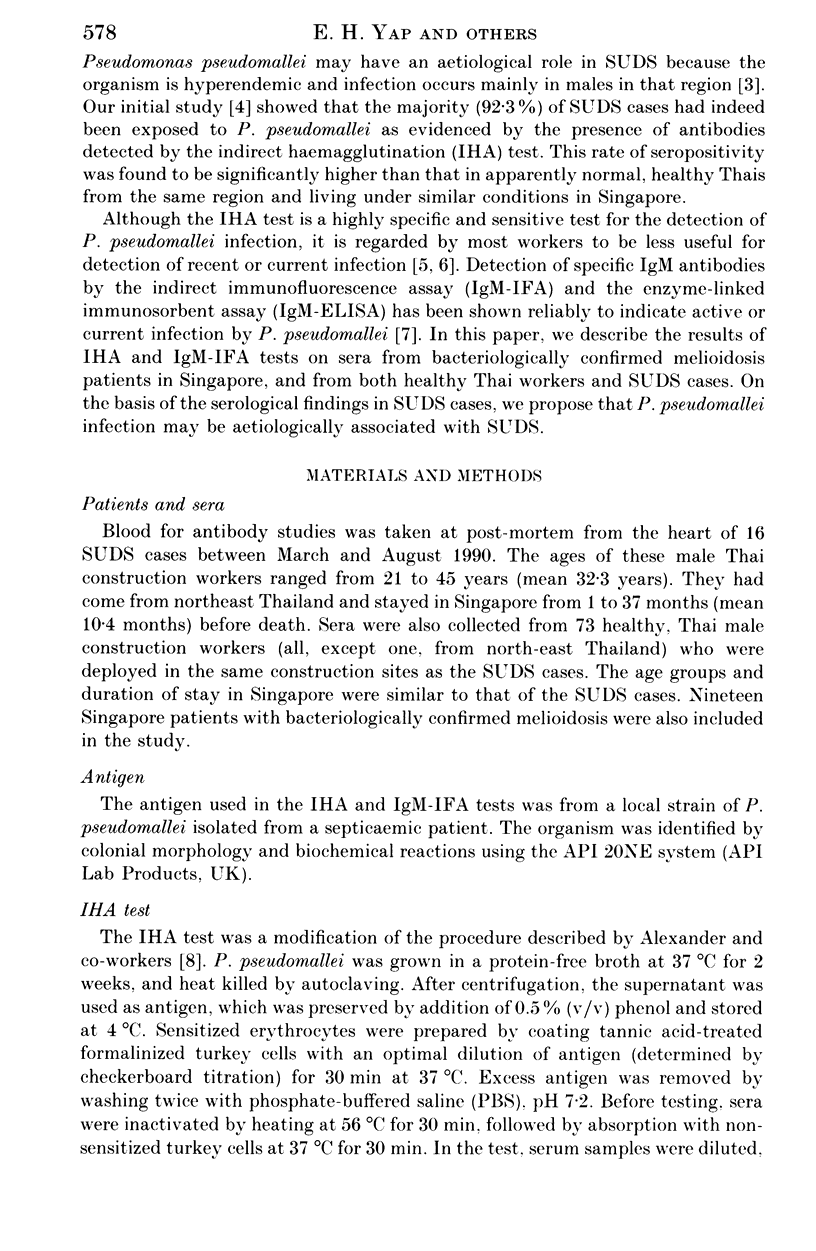
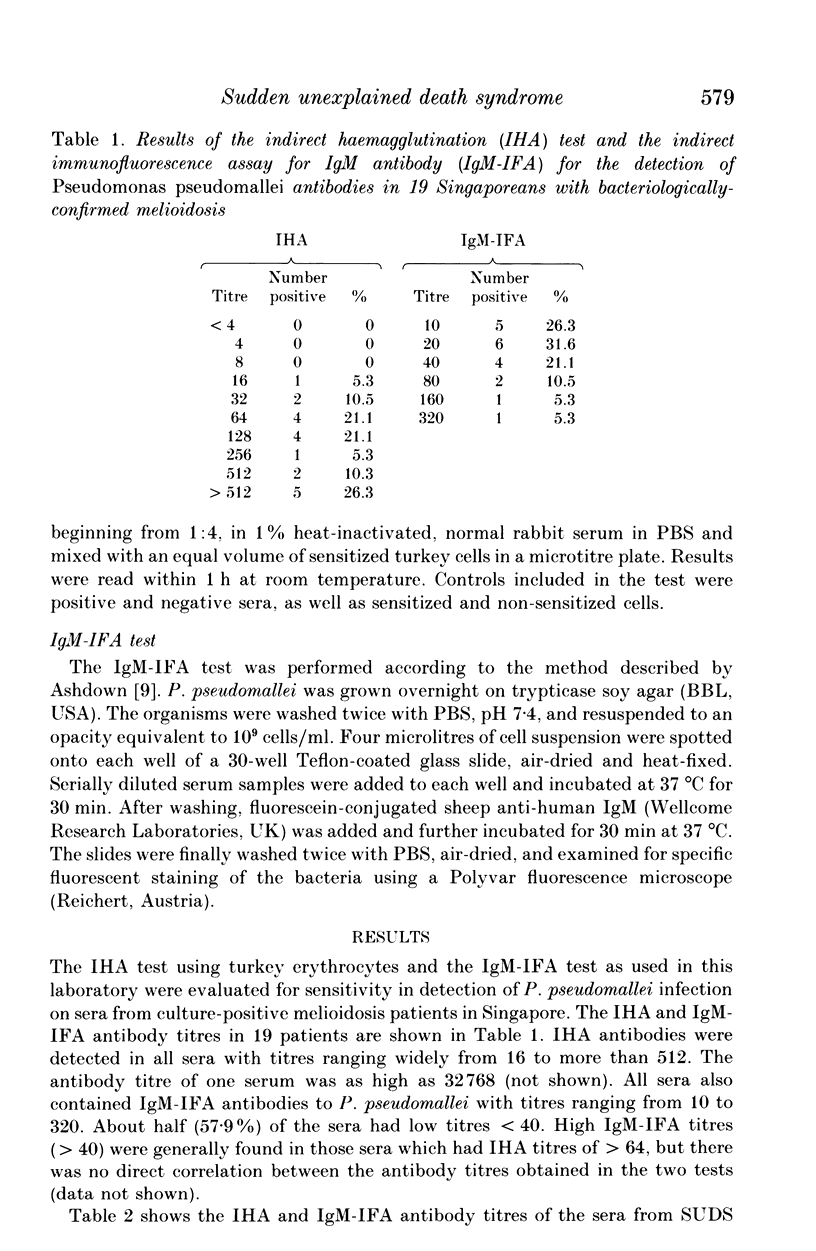
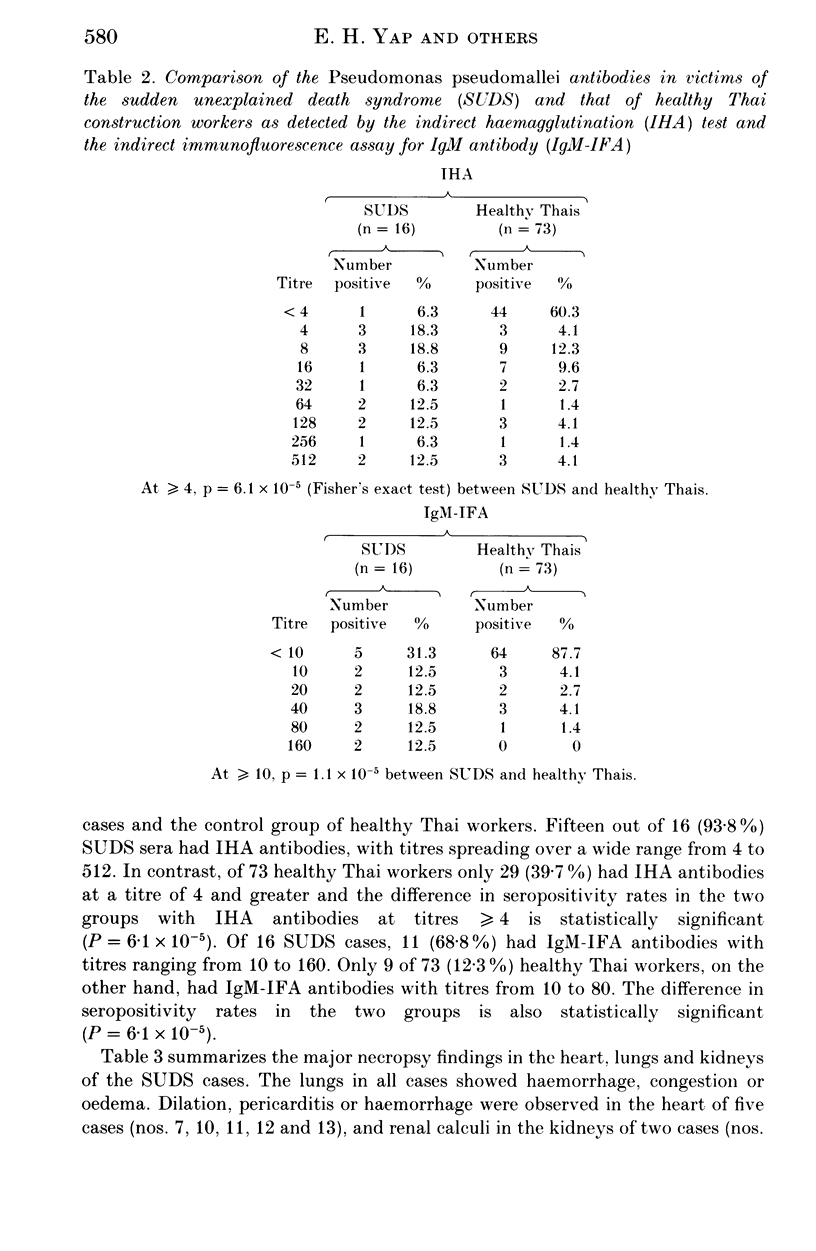
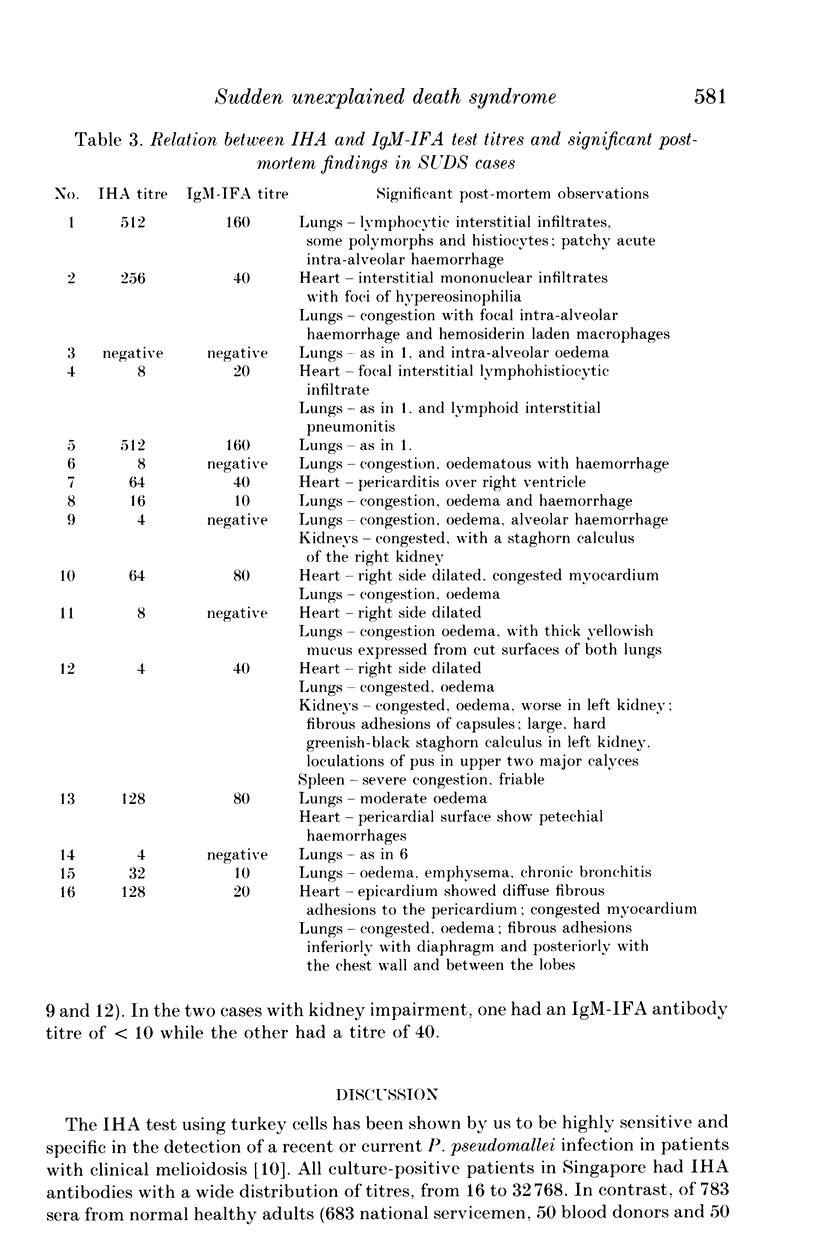
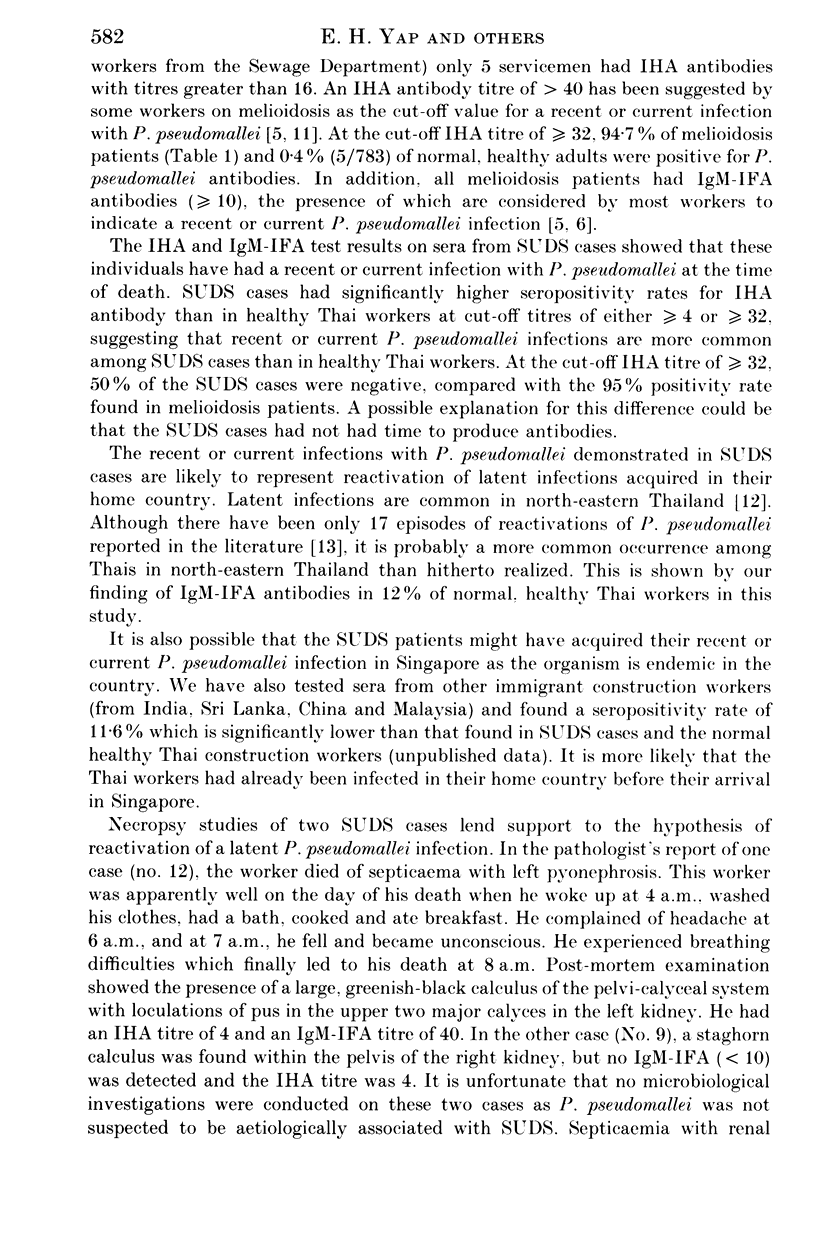
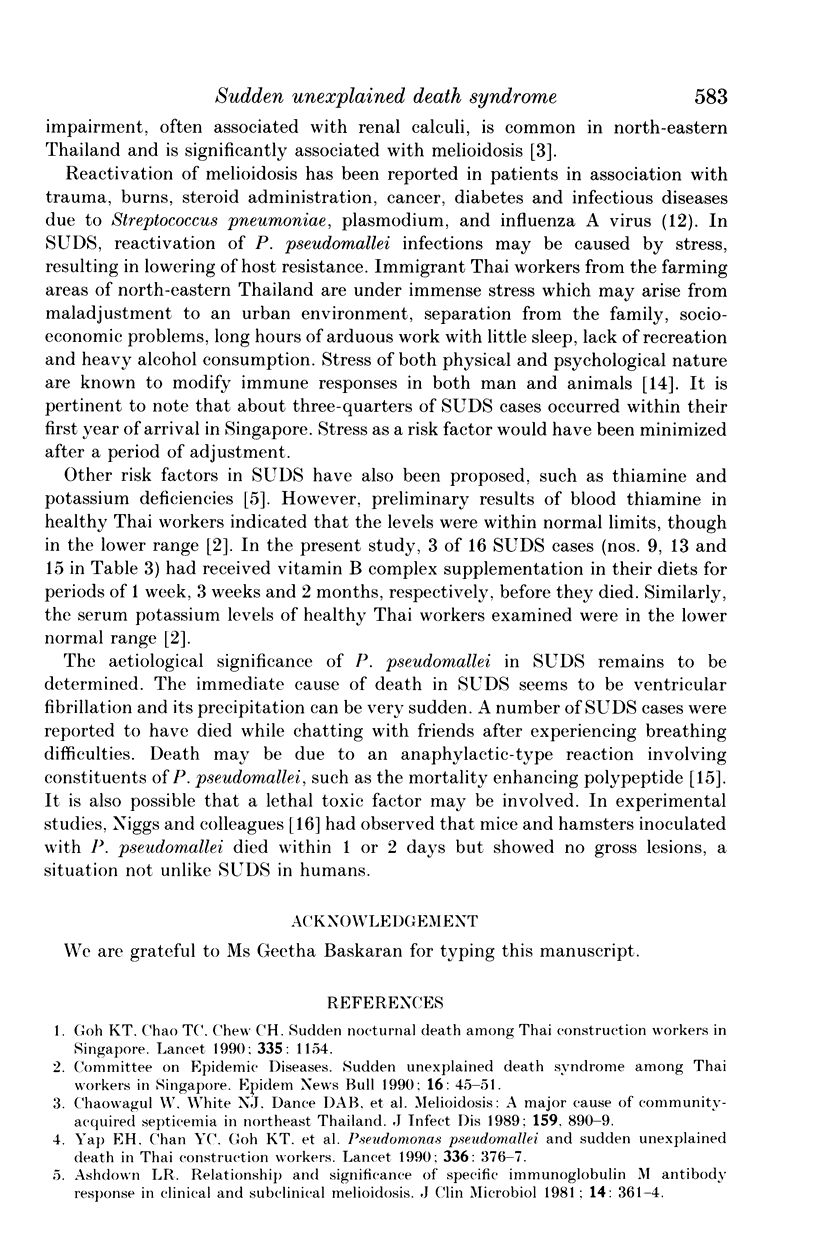
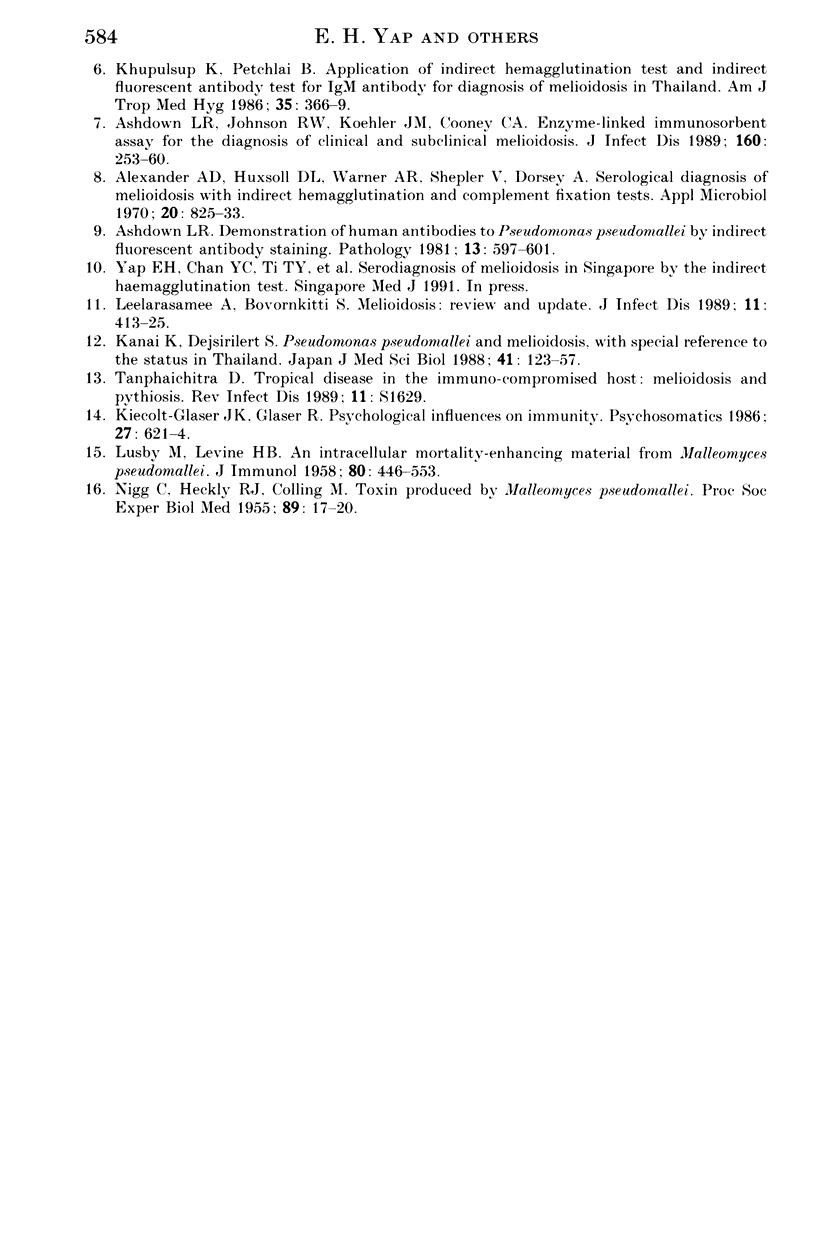
Selected References
These references are in PubMed. This may not be the complete list of references from this article.
- Alexander A. D., Huxsoll D. L., Warner A. R., Jr, Shepler V., Dorsey A. Serological diagnosis of human melioidosis with indirect hemagglutination and complement fixation tests. Appl Microbiol. 1970 Nov;20(5):825–833. doi: 10.1128/am.20.5.825-833.1970. [DOI] [PMC free article] [PubMed] [Google Scholar]
- Ashdown L. R. Demonstration of human antibodies to Pseudomonas pseudomallei by indirect fluorescent antibody staining. Pathology. 1981 Jul;13(3):597–601. doi: 10.3109/00313028109059078. [DOI] [PubMed] [Google Scholar]
- Ashdown L. R., Johnson R. W., Koehler J. M., Cooney C. A. Enzyme-linked immunosorbent assay for the diagnosis of clinical and subclinical melioidosis. J Infect Dis. 1989 Aug;160(2):253–260. doi: 10.1093/infdis/160.2.253. [DOI] [PubMed] [Google Scholar]
- Chaowagul W., White N. J., Dance D. A., Wattanagoon Y., Naigowit P., Davis T. M., Looareesuwan S., Pitakwatchara N. Melioidosis: a major cause of community-acquired septicemia in northeastern Thailand. J Infect Dis. 1989 May;159(5):890–899. doi: 10.1093/infdis/159.5.890. [DOI] [PubMed] [Google Scholar]
- Goh K. T., Chao T. C., Chew C. H. Sudden nocturnal deaths among Thai construction workers in Singapore. Lancet. 1990 May 12;335(8698):1154–1154. doi: 10.1016/0140-6736(90)91153-2. [DOI] [PubMed] [Google Scholar]
- Kanai K., Dejsirilert S. Pseudomonas pseudomallei and melioidosis, with special reference to the status in Thailand. Jpn J Med Sci Biol. 1988 Aug;41(4):123–157. doi: 10.7883/yoken1952.41.123. [DOI] [PubMed] [Google Scholar]
- Khupulsup K., Petchclai B. Application of indirect hemagglutination test and indirect fluorescent antibody test for IgM antibody for diagnosis of melioidosis in Thailand. Am J Trop Med Hyg. 1986 Mar;35(2):366–369. doi: 10.4269/ajtmh.1986.35.366. [DOI] [PubMed] [Google Scholar]
- Kiecolt-Glaser J. K., Glaser R. Psychological influences on immunity. Psychosomatics. 1986 Sep;27(9):621–624. doi: 10.1016/S0033-3182(86)72630-3. [DOI] [PubMed] [Google Scholar]
- LUSBY M., LEVINE H. B. An intracellular mortality-enhancing material from Malleomyces pseudomallei. J Immunol. 1958 Jun;80(6):446–453. [PubMed] [Google Scholar]
- Leelarasamee A., Bovornkitti S. Melioidosis: review and update. Rev Infect Dis. 1989 May-Jun;11(3):413–425. doi: 10.1093/clinids/11.3.413. [DOI] [PubMed] [Google Scholar]
- NIGG C., HECKLY R. J., COLLING M. Toxin produced by Malleomyces pseudomallei. Proc Soc Exp Biol Med. 1955 May;89(1):17–20. doi: 10.3181/00379727-89-21700. [DOI] [PubMed] [Google Scholar]
- Yap E. H., Chan Y. C., Goh K. T., Chao T. C., Heng B. H., Thong T. W., Singh M., Jacob E. Pseudomonas pseudomallei and sudden unexplained death in Thai construction workers. Lancet. 1990 Aug 11;336(8711):376–377. doi: 10.1016/0140-6736(90)91919-2. [DOI] [PubMed] [Google Scholar]


